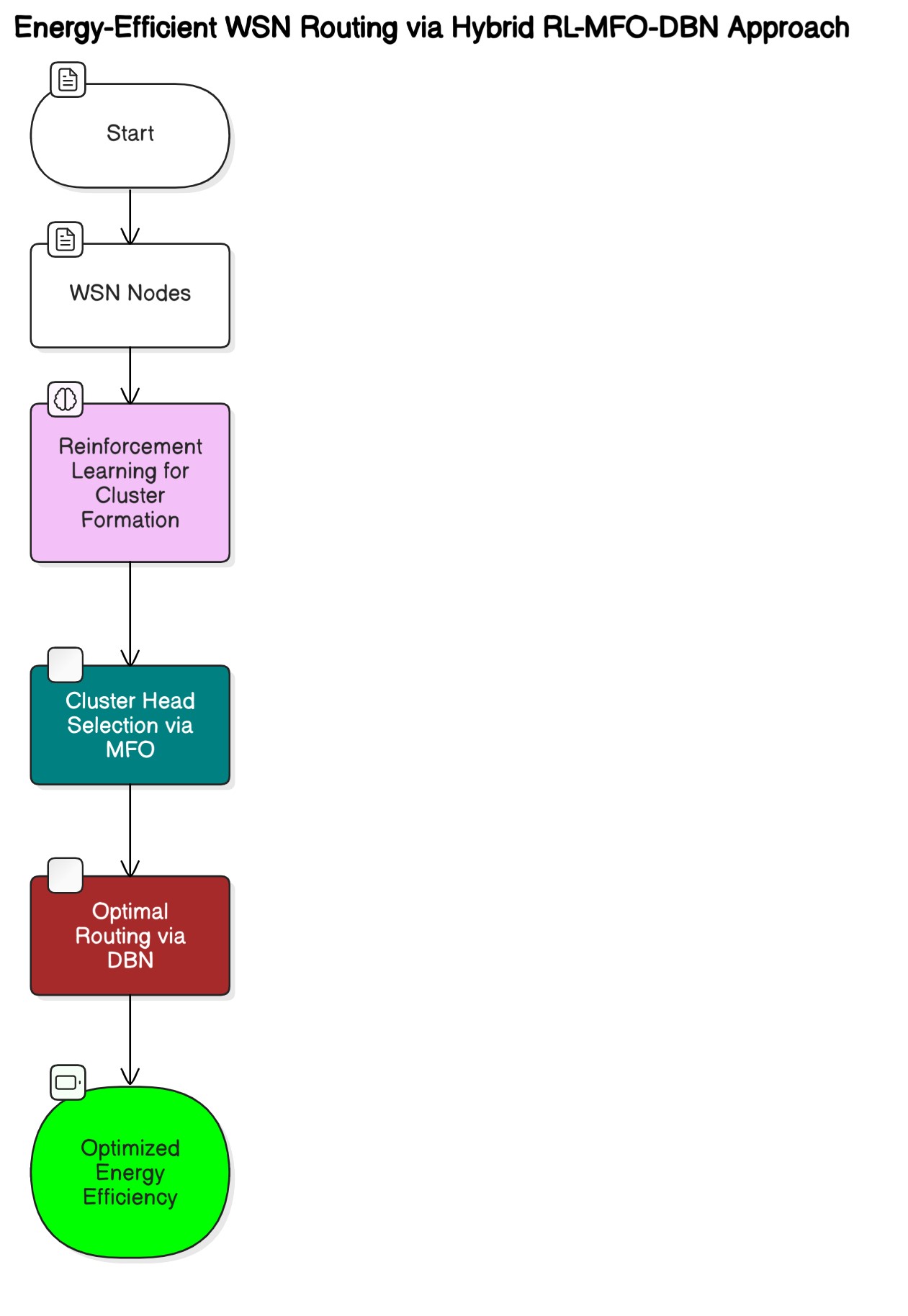
APA Style
Vijayakumar Kadumbadi, Thirumaraiselvan Packirisamy, Sivakumar B, Seenuvasan P. (2025). Optimizing Cluster Head Selection and Routing in 5G WSNs: A Reinforcement Learning and Deep Learning Approach. Communications & Networks Connect, 2 (Article ID: 0009). https://doi.org/Registering DOIMLA Style
Vijayakumar Kadumbadi, Thirumaraiselvan Packirisamy, Sivakumar B, Seenuvasan P. "Optimizing Cluster Head Selection and Routing in 5G WSNs: A Reinforcement Learning and Deep Learning Approach". Communications & Networks Connect, vol. 2, 2025, Article ID: 0009, https://doi.org/Registering DOI.Chicago Style
Vijayakumar Kadumbadi, Thirumaraiselvan Packirisamy, Sivakumar B, Seenuvasan P. 2025. "Optimizing Cluster Head Selection and Routing in 5G WSNs: A Reinforcement Learning and Deep Learning Approach." Communications & Networks Connect 2 (2025): 0009. https://doi.org/Registering DOI.
 ACCESS
Research Article
ACCESS
Research Article
Volume 2, Article ID: 2025.0009

Vijayakumar Kadumbadi
kvijayakumar@panimalar.ac.in

Thirumaraiselvan Packirisamy
thirumarai@apec.edu.in

Sivakumar B
sivakumb2@srmist.edu.in

Seenuvasan P
pseenuvasan@aucev.edu.in
1 Department of AI & DS, Panimalar Engineering College, Chennai, India
2 Department of ECE, Adhiparasakthi Engineering College, Melmaruvathur, India
3 Department of Computing Technologies, SRM Institute of Science and Technology, Chengalpattu, Tamil Nadu, India
4 Department of IT, University College of Engineering, Villupuram, Tamil Nadu, India
* Author to whom correspondence should be addressed
Received: 31 Mar 2025 Accepted: 22 Sep 2025 Available Online: 25 Sep 2025
The Internet of Things (IoT) and 5G wireless sensor networks (WSNs) have transformed data transmission and inter-device communication; however, they face persistent routing challenges owing to energy constraints, latency, and packet loss. This study proposes an energy-efficient data transfer framework for IoT-based 5G WSNs by integrating a deep belief network (DBN) topology with a reinforcement learning (RL)-based clustering mechanism and Mantaray Foraging Optimization (MRFO) for multi-objective cluster head (CH) selection (energy, delay, traffic density, and distance). Unlike existing approaches, such as deep neural networks (DNNs) and time-temperature-dependent forwarding protocols (TTDFP), which focus narrowly on latency or energy efficiency, our hybrid DBN-RL-MRFO architecture jointly optimizes routing stability, scalability, and energy consumption. Simulations demonstrate that the proposed DBN-RL-MRFO framework reduces energy consumption by 5–10% compared to DNN-based methods and improves network lifetime (FND) by 5–15% over the TTDFP, while maintaining near-optimal throughput and latency. Although GEEC achieves lower energy use, our method balances energy efficiency with superior throughput (+3–8%) and reliability (PDR > 99.5 Statistical and complexity analyses further validate its robustness. This study advances reliable routing for IoT applications (smart cities, healthcare, and industrial automation) by balancing the trade-offs between critical WSN constraints.

Disclaimer : This is not the final version of the article. Changes may occur when the manuscript is published in its final format.
We use cookies to improve your experience on our site. By continuing to use our site, you accept our use of cookies. Learn more